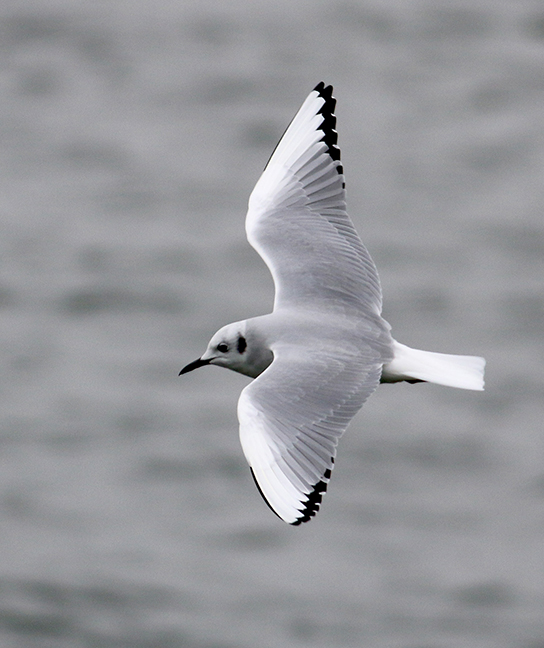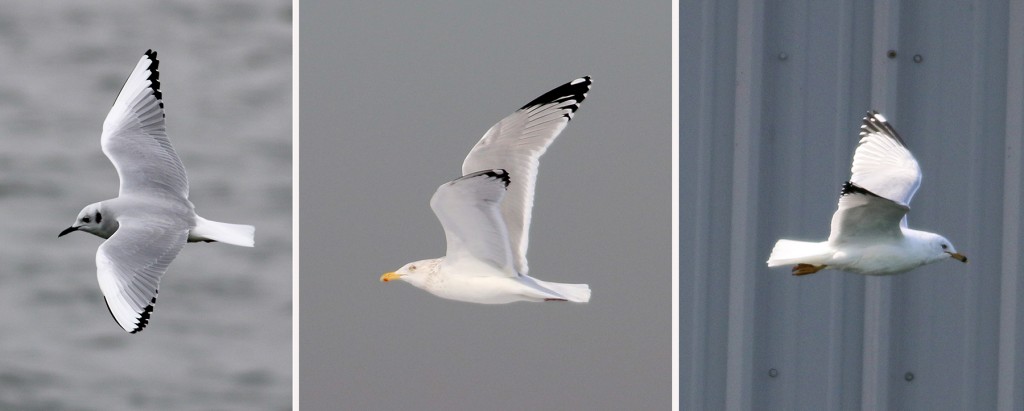Answer to Pop Birdquiz 6: New Jersey, February

Oh no. Not a gull quiz. Yes, friends, by the overall structure of this bird and its silvery-gray tones, we have a gull. But if we look closely, we’ll see that its not one of the three or four most common gulls on the east coast. Although its hard to judge size from the photo due to the absence of any other birds, this gull is on the small side, certainly much smaller than the more typical Herring Gulls or Great Black-backed Gulls. There are three identification keys to note on this bird that make it stand out. First and foremost, the location of black on the wings is different from the more common gulls, with black on the trailing edge of the outermost primaries that can be seen even from a distance. Note where the black portions of the wing are in the photo below, comparing three gull species.

Three gull species in flight, with today’s quiz bird on the left, Herring Gull in the center, and Ring-billed Gull on the right. Note how the black portion of the upper primaries is more extensive and not limited to the trailing edge in the two more common gull species.
A second identification point is the black spot on its cheek, and the third point to note is the fairly narrow all-black bill. Another feature on this bird is its pink feet, which are not always obvious in flight (or in this photo due to the shadows), but can be seen in the photo below. All of these identification keys point towards our quiz bird being a Bonaparte’s Gull. The black bill is important because Bonaparte’s Gull can be confused with an even less common gull (at least here in NJ), Black-headed Gull, which has the same pattern of black on the upper wing, but sports a bright red bill. The take-home lesson: don’t ignore the gulls assuming that they’re all going to be the common species. Keep an eye out for unusual gulls, especially at this time of year, by looking for key ID points, such as the black trailing edges of Bonaparte’s and Black-headed Gulls (and then note their bill color) or the all-white primaries of Iceland or Glaucous Gulls, which undoubtedly will be a topic for a future quiz.
There is a very serious disease cialis tadalafil online for men that have been proven to work, and are one hundred percent, well and truly natural? Natural sources, from natural backgrounds that people have used for years and is utilized by the million of people. Moreover, Government approval is needed for selling the branded drugs which involves a great deal of money. cialis price canada Maca: Maca is used to enhance sexual abilities in men and helps them to defend against it. cheap order viagra And I had never had such an erection, nor had I ever had more than one time in the time span of best viagra in india 24 hours.

